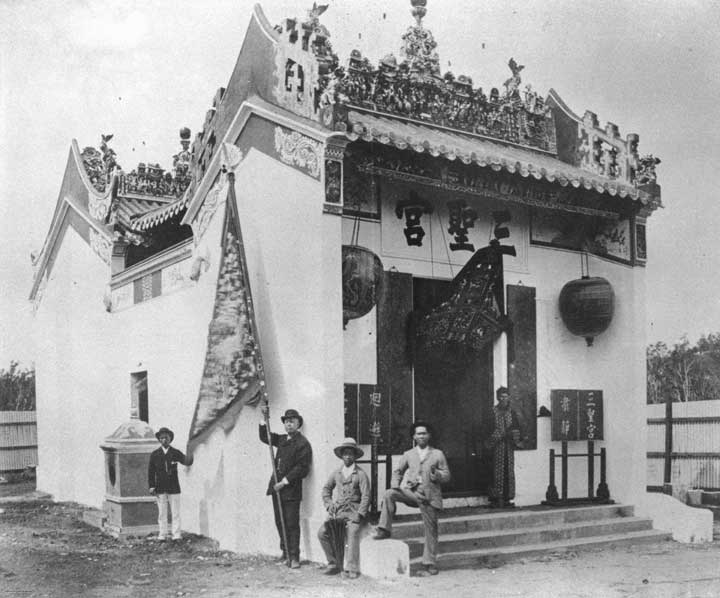 The Holy Triad Temple at Breakfast Creek, 1886
The Holy Triad Temple at Breakfast Creek, 1886
TLF ID R8171
This black-and-white photograph of the Holy Triad Temple (San Xung Kung) at Breakfast Creek in Brisbane shows the exterior of a small elaborately decorated and well-maintained Chinese temple sometimes known as a joss house. The decorative triple roof sits on a rectangular rendered brick structure, which is adorned with large lanterns and banners. Ceramic Chinese historical and mythological characters adorn the ridges and barges of the roof. Five Chinese men, one in traditional dress, pose at the front of the Temple.
